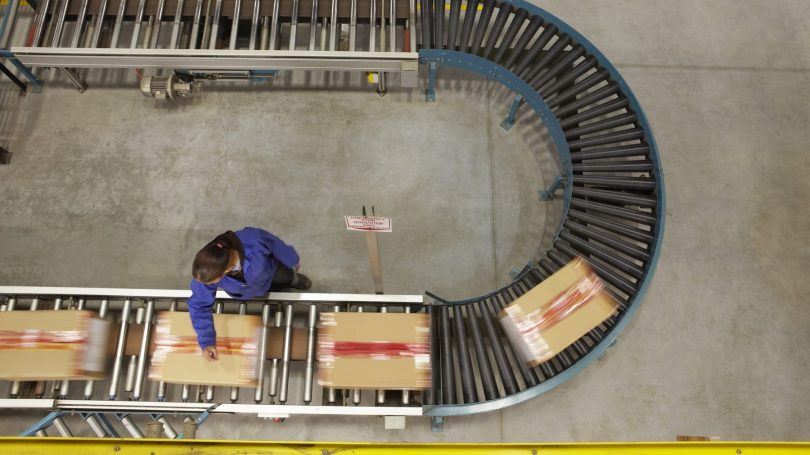[ad_1]
The Japanese concept of kaizen, popularized by Toyota for manufacturing cars, is often referred to as automation with a human touch. It empowers workers on an otherwise automated production line to stop the process at the moment a problem is detected and fix it.
This is how today’s complex supply chains should operate, especially if we’re to fix issues that impact sustainability. The only question is, how do companies give workers the real-time information they need to intervene?
Before we answer, we should acknowledge the efforts many companies have made in reducing carbon emissions and improving sustainability through their investments, operations, and supply chains. According to McKinsey & Company, more than 90 percent of S&P 500 companies publish environmental, social and governance (ESG) reports detailing, among other important criteria, their climate impact, and the steps they’re taking to zero-out emissions by some future date. In fact, the US Securities and Exchange Commission is now requiring companies to disclose in greater detail their climate-related risks and greenhouse gas emissions.
Pledges of future improvement are all well and good, but how can this spur positive change now, when we need it? So much about ESG performance is about satisfying the information needs of boards of directors and investors at periodic intervals. But what about improving ESG performance in the moment? After all, a company’s carbon footprint changes dynamically, based on myriad factors, both in and out of its control. Plus, ESG reports already have an image problem: PwC found that less than 40 percent of investors trust the ESG reports that companies issue.
The solution is real-time ESG, and the ability to better inform companies about their sustainability performance at the top level, while at the same time pushing actionable data downstream, to the worker level. Imagine a freight shipper receiving real-time information about the carbon emissions of a particular shipment, based on distance traveled, load, refrigeration, and other factors. With such information in-hand, the shipper could make decisions that improve sustainability performance. It’s possible.
Need for Real-Time Visibility
From a supply chain perspective, this means real-time visibility into everything that factors into a companies’ carbon footprint, from scope 1 and 2 emissions to scope 3 (the emissions of supply chain partners). Cold chains, in particular, can benefit from such real-time visibility, not only to gauge the CO2 emitted through transportation, cooling, etc., but also to track and avoid wasting everything from food to temperature-sensitive vaccines. Food systems, for example, consume about 30 percent of available global energy, 38 percent of which goes toward food that is lost or wasted.
Through available technology solutions, companies can track goods and materials in their supply chains, including location, temperature, humidity, fill levels, and more. And by democratizing that data, they can empower workers to take action that minimizes carbon impact and waste.
Workers could spot a problem and fix it before it ever comes to the attention of senior management.
Recently, in a proof of concept for a large retailer, tracking information for pallets of fresh strawberries was transmitted automatically from distributor to truck to store. Those who were monitoring the data could see — down to the individual pallet — if the strawberries were being transported quickly and at a safe temperature.
Then an interesting thing happened. The temperature of one pallet rose precipitously and stayed there for more than an hour. It turns out the pallet was left out on a store floor and temporarily forgotten, threatening the fruit’s freshness.
Mistakes happen. Workers are human. In a live application of this traceability technology, an alert could be sent to the smart phones of store employees, who could fix the situation in the moment. As it was, during this particular proof of concept, observers noticed the anomaly in the data and dispatched someone to intervene.
Disaggregation of Supply Chain Data
Fixing supply chains to support real-time ESG and greater sustainability takes a mental shift. It takes realizing that despite growing supply chain complexity, the person in the best position to fix a problem is the person who first spots it — or even who creates it. That while real-time visibility data about supply chain performance can turn into a better, top-level picture of ESG commitments, real power comes from the disaggregation of data and localization of traceability information.
In a second pilot of real-time tracking technology, a pharmacy chain wanted to track shipments to its stores. It could see not only when the temperature of certain drugs rose above safe levels, but also when one truck made an unexpected stop at a store well off its route, triggering an alert and eventual course correction, and saving time and fuel.
In this way, traceability data makes supply chains self-healing, treating the cause of ESG lapses, rather than the symptoms. The data is generated by affixing low-cost, Bluetooth-enabled IoT sensors to products, packaging, and transport items. It’s then wirelessly transmitted to the cloud where applications make sense of it and trigger action where needed.
The biggest challenge is aligning interests around this kind of transformational technology. Companies and their supply chain partners need to understand the potential for sharing traceability data, whether it’s to meet their ESG commitments or because regulators have begun to demand transparency. And workers need to be assured that the purpose of such technology it to put power in their hands — the power to fix problems when they see them in support of a more efficient, sustainable, and ultimately profitable supply chain.
Real-time ESG enabled by supply chain traceability technology means everyone in an organization is on the same page — from the C-suite to the distribution warehouse. And it means their partners can be, too. According to CDP, a global nonprofit for helping companies manage their environmental impact, supply chain emissions are 11.4 times higher than operation emissions. Traceability technology can help fight that.
[ad_2]
Source link








